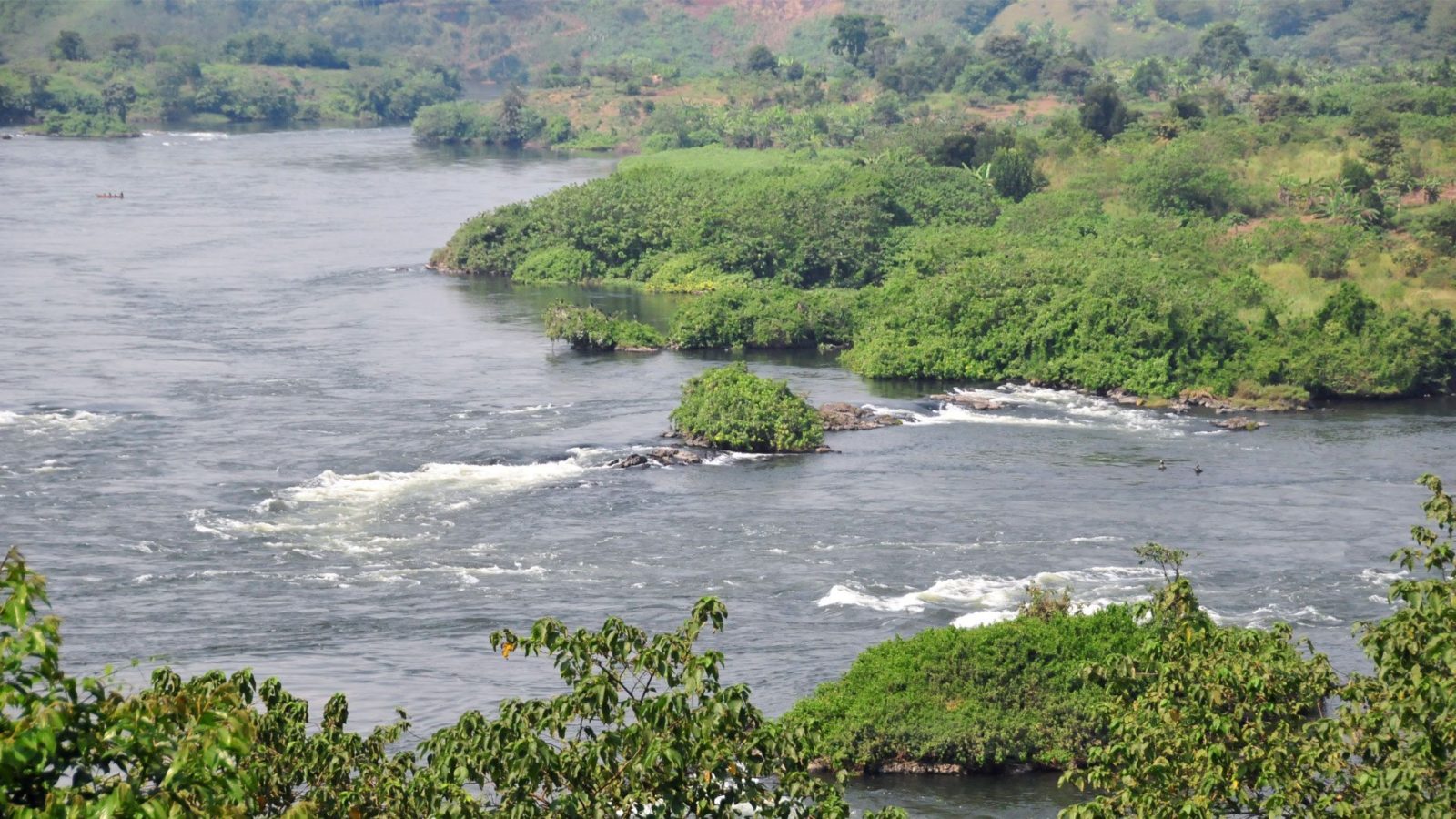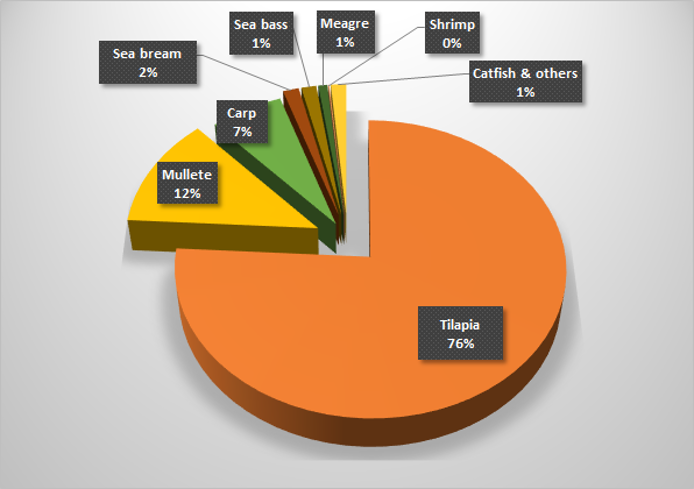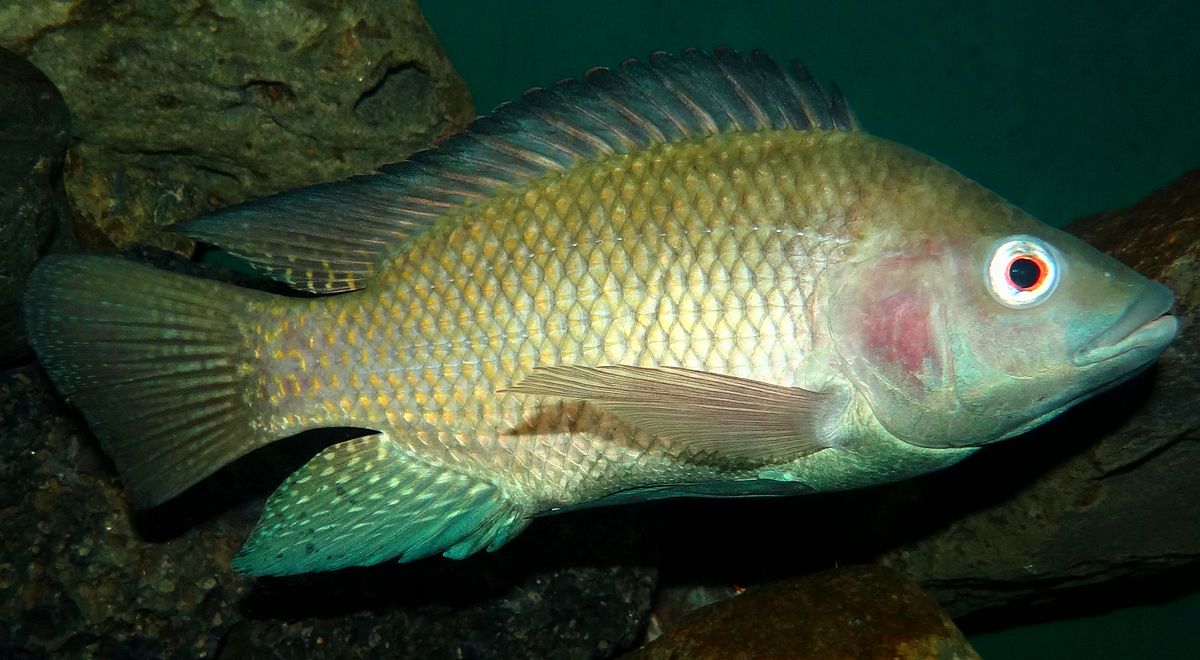Introduction
Nile's length across Egypt is more than 1000 km hence it has played a major role in the development of the Egyptian civilization in the history. The Nile is the main resource of food and water for the local people and more than 90% of fresh water supplies are coming from it. Moreover, it makes Egypt to be one of the largest freshwater fish producers around the world due to its excessive fish farming activities along the river [1]. It has been estimated that hundreds of thousands tons of fresh water fish are farmed annually. The figure below gives us a clear view of the annual aquaculture production (in tons per year) of the year 2012.
Figure 1: Features of aquaculture production [4]
The Nile authorities are quite sensitive in the environmental laws and legislation especially in Egypt. The Ministry of Environment and other governmental agencies and local authorities play an important role and are responsible for setting the environmental rules and regulations. According to the Ministry of State for Environmental Affairs [2], the current legislative requirement for any proposed project in the Nile must to be considered under the LAW NUMBER 4 OF 1994, PROMULGATING THE ENVIRONMENT LAW (amended Law No.9 for 2009). It mentions that the environmental data and impacts such as land use, surface water, air quality, biodiversity, bird and fish species, noise and vibration need to be taken into account for any power generation development.
Potential impact
|
Since the project is proposed in the Nile, the potential impacts which may occur during the construction and life time operation of the project have been considered [3]. Some of the major and minor impacts have been summarized as follows:
|
Figure 2: Tilapia, the most common fish in Nile
|
The areas of land use for the substation and the transmission lines are not significantly wide to be considered as major impact. Subsequently, the project might not essential affect the hydrology and water quality of the river. Therefore, the main effects of those impacts have been considered as minor. However, the changes in the fish farming area is a meaningful concern for the environmental footprint.
The operation and vibration of the wind and current turbines may affect the features traits of the fish swimming behavior [4]. Fish movement might be restricted as well, since there is not significant space below the platform. Therefore, there might be subsequent effects related to the habitat connectivity and the migration routes.
The operation and vibration of the wind and current turbines may affect the features traits of the fish swimming behavior [4]. Fish movement might be restricted as well, since there is not significant space below the platform. Therefore, there might be subsequent effects related to the habitat connectivity and the migration routes.
Possible mitigation
In the following table a summary of different proposed mitigation strategies is outlined, as an effort to minimise the negative environmental consequences described above.
Figure 3: Impact mitigation matrix, proposed for HAPI project
Conclusions
The investigation of the impacts and possible mitigation procedures showed that the project implementation is deemed to be secure for the fish farming and the hydrological changes of the river. Nevertheless, a thorough investigation of visual impact on landscape needs to be perfomed for the possibility of a large array farm. In a nutshell, the project seems to present a good level of environmental friendliness under the designated conditions.
References
[1] Soliman, N. F. & Yacout, D. M. M., (2016). Aquaculture in Egypt: status, constraints and potentials. Aquaculture International.
[2] Eeaa.gov.eg. (2018). Ministry of Environment - EEAA > Laws > Env. Law. [online] Available at: http://www.eeaa.gov.eg/en-us/laws/envlaw.aspx [Accessed 8 Mar. 2018].
[3] El Gohary, R. & Armanious, S., (2017). Environmental Impact Assessment for Projects in the Nile Basin Countries. European Scientific Journal, 13(5).
[4] Shaalan, M., El-Mahdy, M., Saleh, M. & El-Matbouli, M., (2017). Aquaculture in Egypt: Insights on the Current Trends and Future Perspectives for Sustainable Development. Reviews in Fisheries Science & Aquaculture.
[2] Eeaa.gov.eg. (2018). Ministry of Environment - EEAA > Laws > Env. Law. [online] Available at: http://www.eeaa.gov.eg/en-us/laws/envlaw.aspx [Accessed 8 Mar. 2018].
[3] El Gohary, R. & Armanious, S., (2017). Environmental Impact Assessment for Projects in the Nile Basin Countries. European Scientific Journal, 13(5).
[4] Shaalan, M., El-Mahdy, M., Saleh, M. & El-Matbouli, M., (2017). Aquaculture in Egypt: Insights on the Current Trends and Future Perspectives for Sustainable Development. Reviews in Fisheries Science & Aquaculture.
|
STRATHCLYDE UNIVERITY
16 Richmond Street Glasgow G1 1XQ Scotland, United Kingdom Phone: +44 141 552 4400 https://www.strath.ac.uk © Copyright 2018 |





